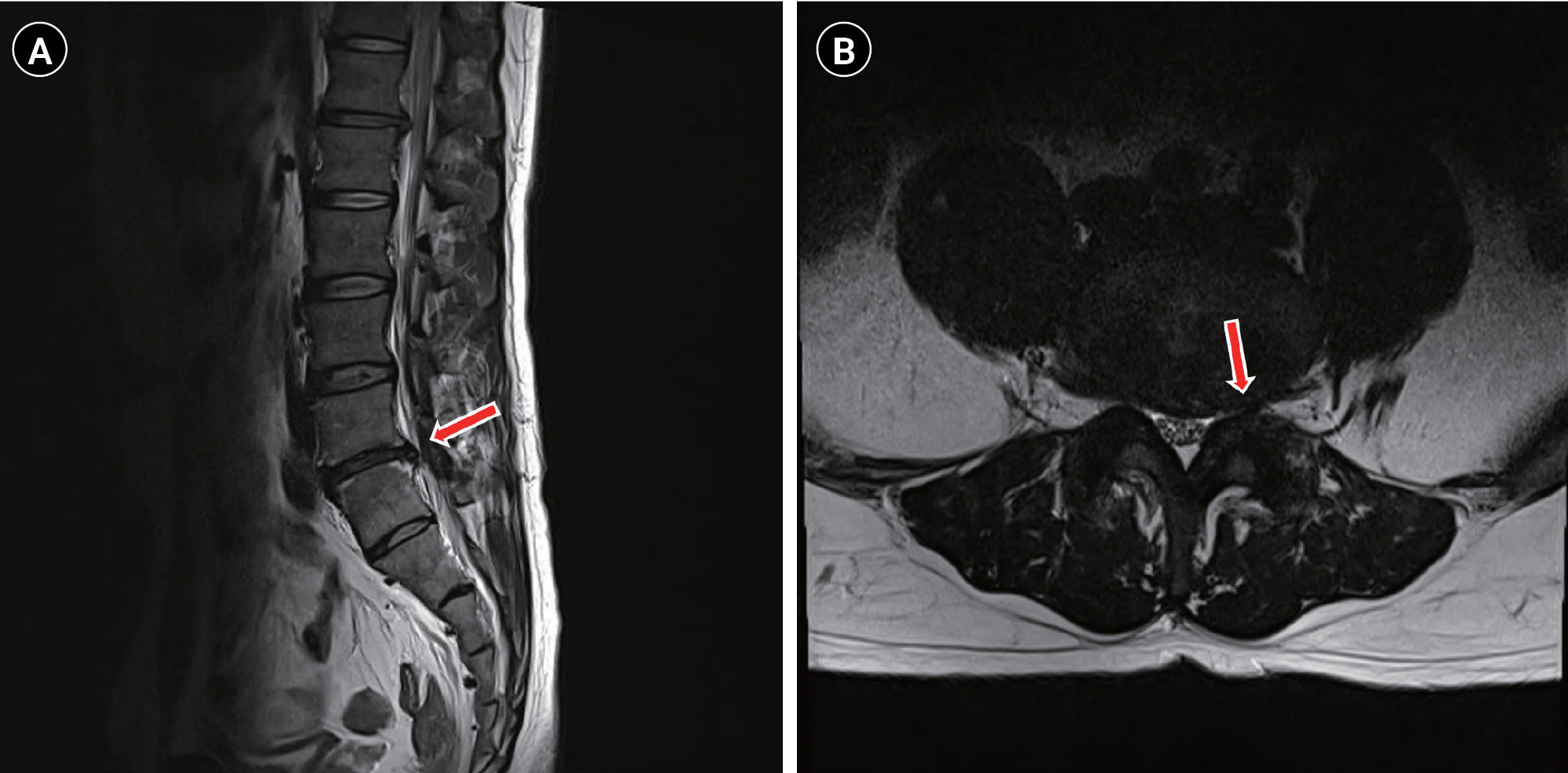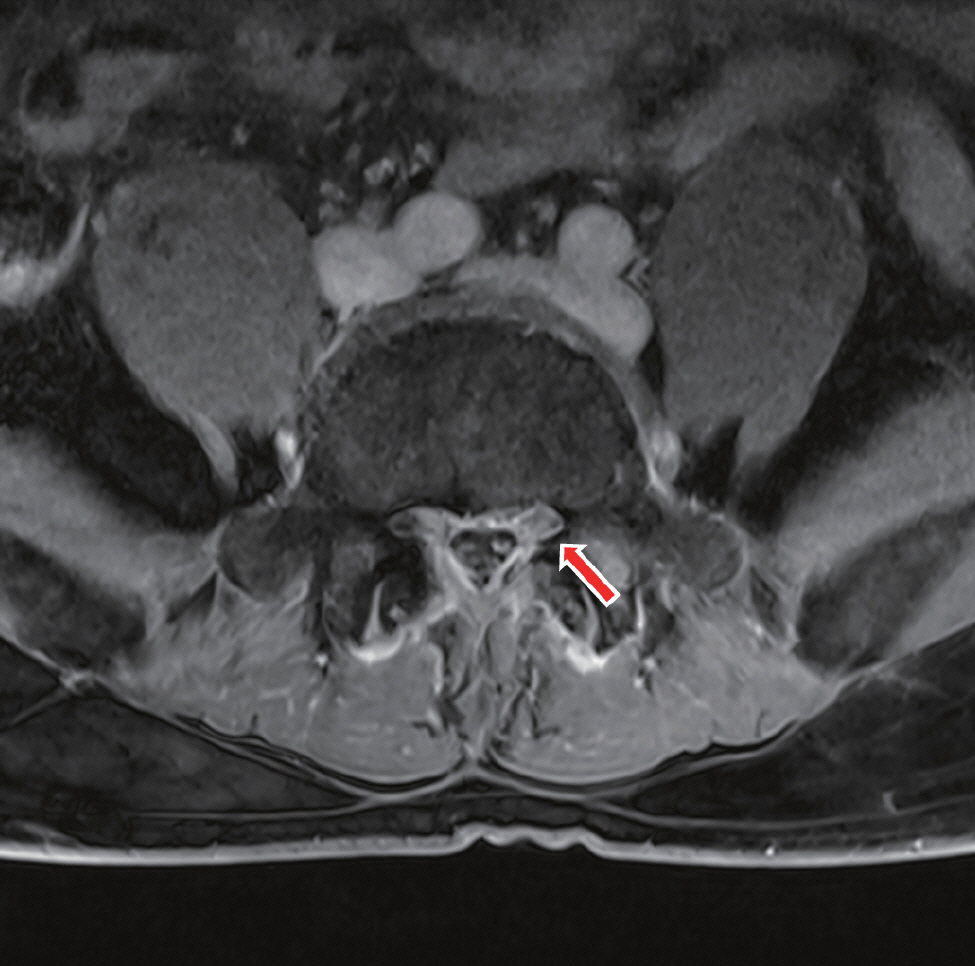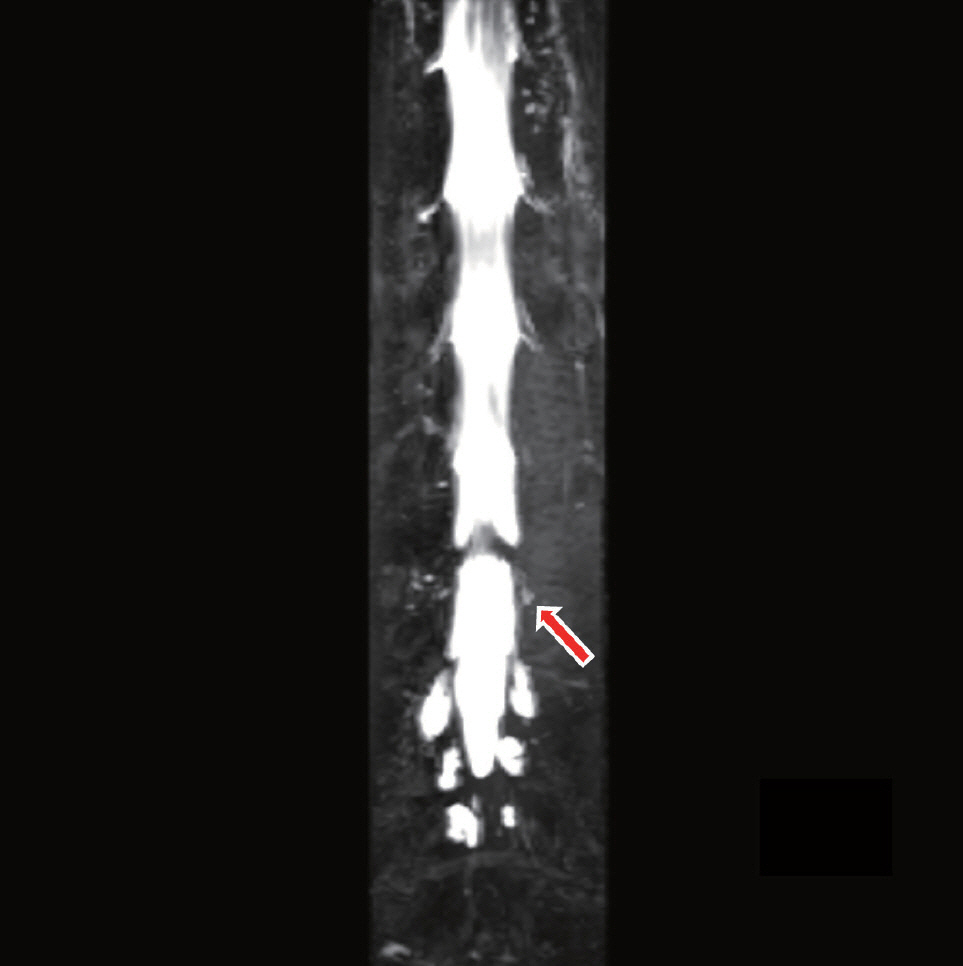Anesth Pain Med.
2023 Oct;18(4):414-420. 10.17085/apm.23082.
Treatment of postural headache occurred 26 days after spinal pain procedure - A case report -
- Affiliations
-
- 1Department of Anesthesiology and Pain Medicine, Inje University Sanggye Paik Hospital, Seoul, Korea
- KMID: 2550922
- DOI: http://doi.org/10.17085/apm.23082
Abstract
- Background
Cerebrospinal fluid (CSF) leakage may cause intracranial hypotension and postural headache. Secondary intracranial hypotension may result from an iatrogenic dural puncture or traumatic injury associated with pain procedures. Case: A 45-year-old male developed a headache 26 days after spinal pain procedure. Headache was characterized as postural, worsening with standing or sitting and improving while lying down. The pain did not resolve despite the administration of oral and intravenous analgesics. A spinal magnetic resonance imaging revealed epidural venous congestion and a suspicious CSF leak around the left L4/5 level. The patient received an epidural blood patch (EBP), the headache improved dramatically, and the patient was discharged. Conclusions: Delayed postural headaches may not be directly related to pain management. Nevertheless, intracranial hypotension related to pain management should be suspected even in this case. If confirmed, quickly applying an EBP is an effective treatment option.
Keyword
Figure
Reference
-
1. Rajpal S, Nambiar M, Castanelli D, Khabaza A, Asadi H, Jhamb A, et al. Spontaneous intracranial hypotension and spinal epidural CSF leaks: diagnosis and management. J Clin Neurosci. 2023; 111:46–56.
Article2. Lee YI, Soh HJ, Kim ED. Postdural puncture headache after cervical medial branch block. Soonchunhyang Med Sci. 2018; 24:196–8.
Article3. Vilming ST, Schrader H, Mostad I. The significance of age, sex, and cerebrospinal fluid pressure in post-lumbar-puncture headache. Cephalagia. 1989; 9:99–106.
Article4. Kuntz KM, Kokmen E, Stevens JC, Miller P, Offord KP, Ho MM. Post-lumbar puncture headaches: experience in 501 consecutive procedures. Neurology. 1992; 42:1884–87.5. D'Antona L, Jaime Merchan MA, Vassiliou A, Watkins LD, Davagnanam I, Toma AK, et al. Clinical presentation, investigation findings, and treatment outcomes of spontaneous intracranial hypotension syndrome: a systematic review and meta-analysis. JAMA Neurol. 2021; 78:329–37.6. Hong JH, Lee HW, Lee YH. Greater occipital nerve blockade using ultrasound guidance for the headache of spontaneous intracranial hypotension: A case report. Anesth Pain Med (Seoul). 2022; 17:62–6.7. Headache classification committee of the international headache society (IHS) the international classification of headache disorders, 3rd edition. Cephalalgia. 2018; 38:1–211.8. Marcelis J, Silberstein SD. Spontaneous low cerebrospinal fluid pressure headache. Headache. 1990; 30:192–6.
Article9. Seebacher J, Ribeiro V, LeGuillou JL, Lacomblez L, Henry M, Thorman F, et al. Epidural blood patch in the treatment of post dural puncture headache: a double blind study. Headache. 1989; 29:630–2.
Article10. Dobrocky T, Nicholson P, Häni L, Mordasini P, Krings T, Brinjikji W, et al. Spontaneous intracranial hypotension: searching for the CSF leak. Lancet Neurol. 2022; 21:369–80.
Article11. Schievink WI. Spontaneous spinal cerebrospinal fluid leaks and intracranial hypotension. JAMA. 2006; 295:2286–96.
Article12. Reamy BV. Post-epidural headache: how late can it occur? J Am Board Fam Med. 2009; 22:202–5.
Article13. Ferrante T, Latte L, Abrignani G, Russo M, Manzoni GC, Torelli P. Cough headache secondary to spontaneous intracranial hypotension complicated by cerebral venous thrombosis. Neurol Sci. 2012; 33:429–33.
Article
- Full Text Links
- Actions
-
Cited
- CITED
-
- Close
- Share
- Similar articles
-
- Spontaneous Intracranial Hypotension after Post-dural Puncture Headache : A case report
- Suspected transcutaneous cerebral spinal fluid leakage without postural headache after implantable intrathecal drug delivery system removal: A case report
- Spontaneous Intracranial Hypotension Treated with Epidural Blood Patch: A case report
- A Case of Spontaneous Intracranial Hypotension with Headache and Tinnitus Treated with Epidural Blood Patch : A Case Report
- Spontaneous Intracranial Hypotension and Epidural Blood Patch: A case report





